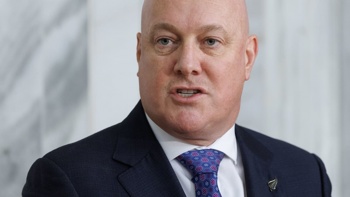More than half of 189,000 New Zealanders on the Jobseeker benefit have received it for at least a year, data from the Ministry of Social Development (MSD) shows.
Prime Minister Christopher Luxon said in his state of the nation speech last weekend that the “free ride” was over for beneficiaries who had not adhering to their obligations, vowing to “break the shackles” of welfare dependency.
“We’ll do everything we can to help people into work, but if they don’t play ball, the free ride is over,” Luxon said.
He said he’d seen enough evidence to prove the use of sanctions should be used more often up to encourage people to get off the benefit.
But Labour and the Greens argue the opposite, echoing findings from a group of experts who deemed sanctions to be “problematic” and ineffective at getting beneficiaries into work.
The latest MSD data from last year shows there are 378,711 people in New Zealand receiving a “main benefit” (an emergency, Jobseeker, sole parent, youth or supported living payment).
Of these, 189,798 people were on a Jobseeker benefit. Each of these main benefit payments has specific obligations recipients need to adhere to.
The number of people receiving a main benefit has declined since its Covid-19 peak at the end of 2020 but has been increasing since early 2023.
There were 108,957, or 57 per cent of the 189,798 people receiving Jobseeker support, who had been receiving it for at least one year, the MSD data showed.
Most of the people receiving this payment were male (107,130) and the most common age of the recipients was 25-39 (60,561).
- Why are so many young people on the benefit?
- Former WINZ boss applauds Govt's "courageous" benefits policy
- "Upping the ante" on sanctions wont solve benefits problem - Former Social Development Minister
By region, Northland had the most on a Jobseeker support for more than a year (63 per cent), followed by those living on the West Coast (61 per cent) and Waikato (60 per cent).
The Jobseeker payment has two sub-categories: “work-ready” - people who are looking or preparing for work; and those with a current medical condition or disability affecting their ability to work.
Most people who receive the Jobseeker payment for a medical condition or disability were receiving it because they were experiencing a psychological or psychiatric condition (40,479). Similar to the overall main benefit figures, the number of people receiving financial support for this reason has steadily tracked up since mid-2022.
Modelling obtained by the Herald revealed earlier this month that expected time on Jobseeker and other main benefits has risen sharply in the past four years.
Government estimates of the time beneficiaries will spend on income support have risen sharply, with recipients of the main Jobseeker payment now expected to spend an average of 13 years on a benefit, according to the modelling.
The estimated time that work-ready Jobseeker recipients will spend on income support until they reach retirement age has jumped by 23 per cent since 2019, amid a slowdown of the benefits system that could strain government finances and trap thousands of people in poverty.
Long-term estimates for people on youth benefits and sole-parent support have increased even more starkly. Hundreds of disadvantaged teens are now expected to spend virtually their entire working lives on a main benefit, at a cost of nearly $1 million each in future payments, according to modelling by actuaries Taylor Fry for the MSD.
In total, Taylor Fry estimated that 626,000 New Zealanders who received a benefit in the last year will collectively spend another 6.43 million years on income support.

Julia Gabel is an Auckland-based reporter with a focus on data journalism. She joined the Herald in 2020.
Take your Radio, Podcasts and Music with you









